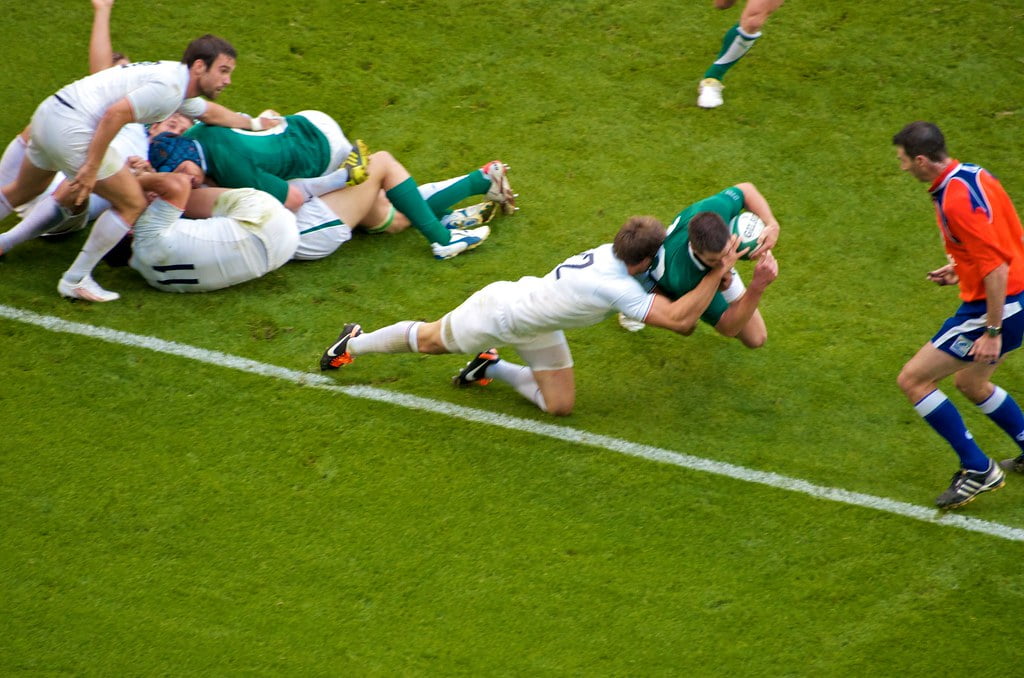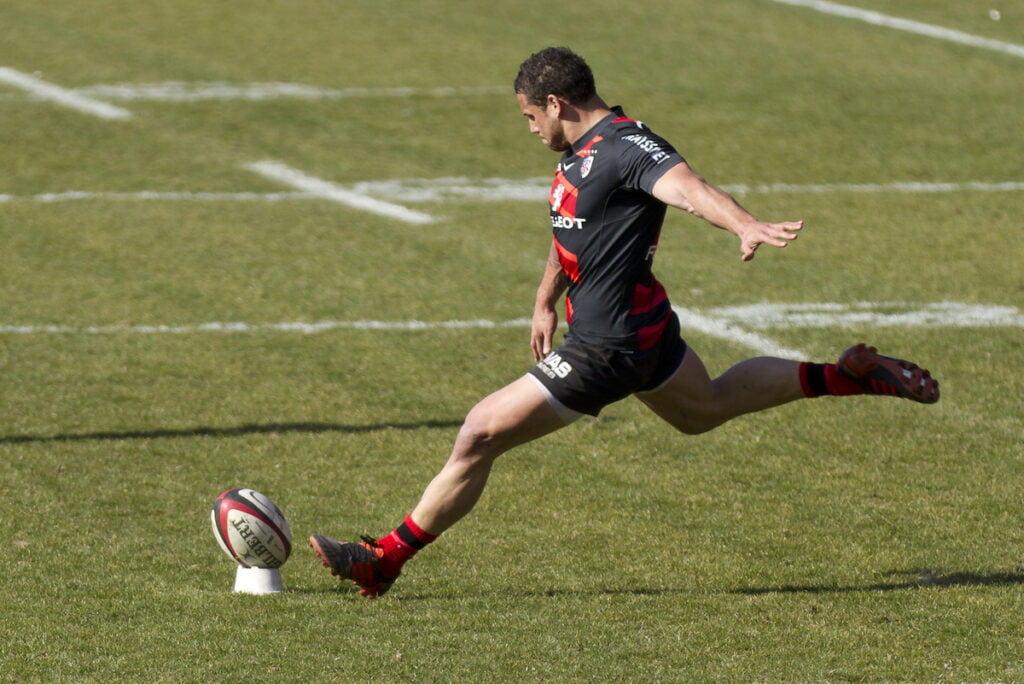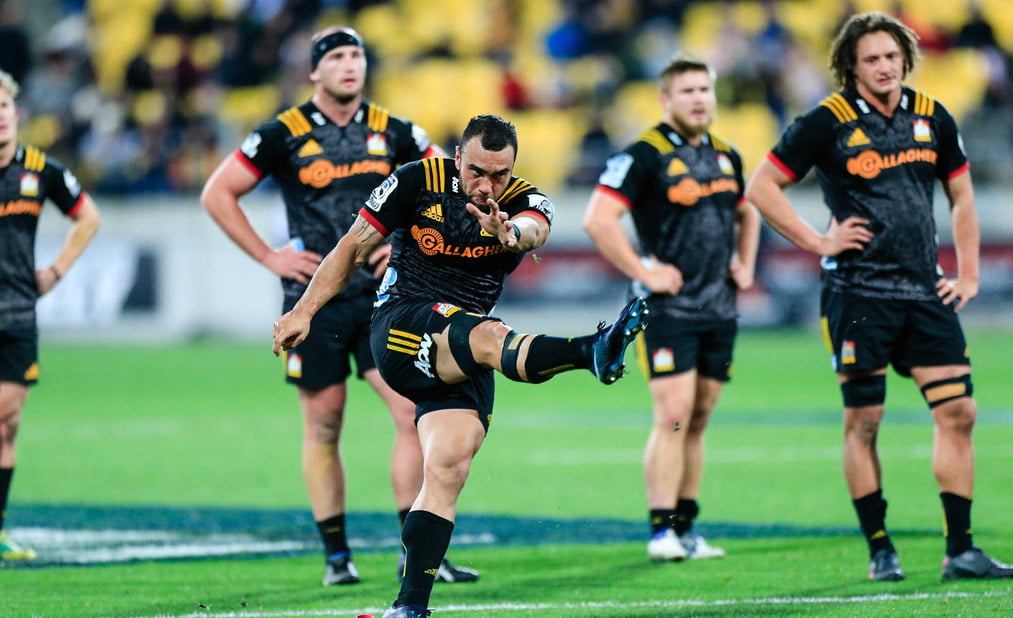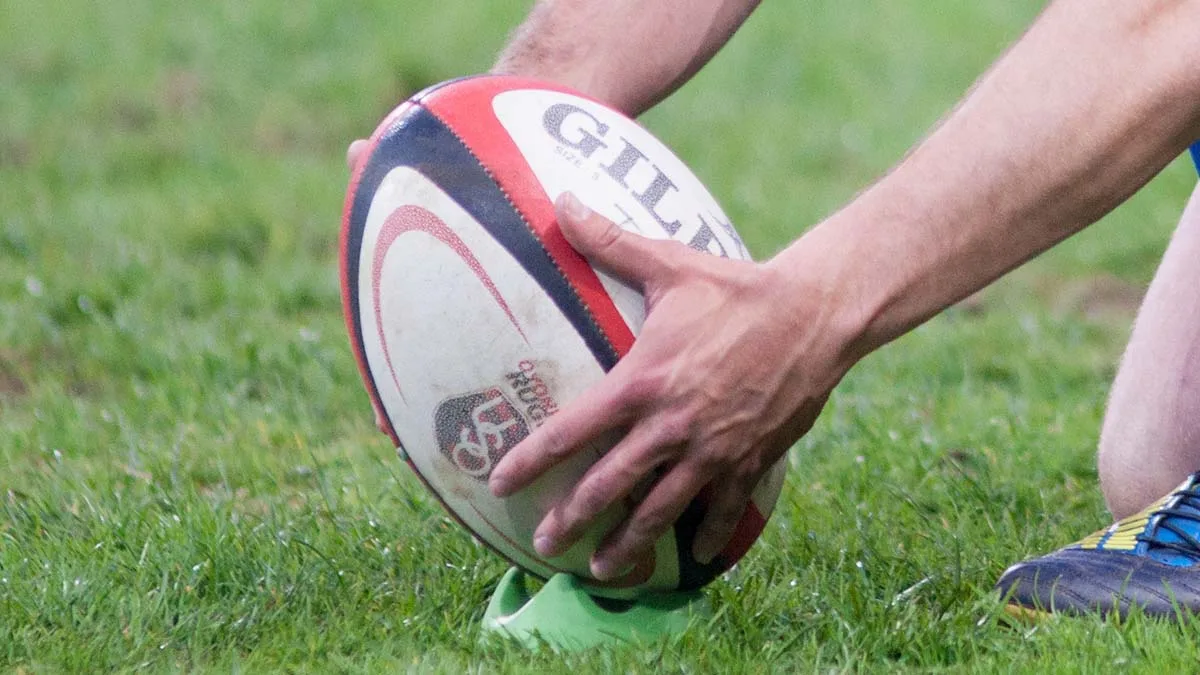Rugby matches are won and lost based on the points scored, but because there are different ways of scoring, each with different point values, draws are rare. Originally, points were scored simply by kicking the ball over the bar, and a try just gave you a chance to “Try” for a goal!
Points scored can change from time to time as World Rugby tries to incentivise different ways of playing.
In rugby, there are several ways to score points:
- Try (5 points): When a player touches the ball down in the opponent’s in-goal area.
- Conversion (2 points): After scoring a try, the scoring team has an opportunity to kick the ball over the crossbar and between the posts.
- Penalty Kick (3 points): A team can score a penalty kick by kicking the ball over the crossbar and between the posts from the place where the infringement occurred.
- Drop Goal (3 points): A drop goal is scored by dropping the ball and kicking it on the half-volley between the posts and over the crossbar.
The team with the most points at the end of the game wins. If the score is tied, the game is declared a draw.
What is a try in rugby
A try in rugby is the primary way to score points in the game. It is awarded when a player carries or grounds the ball in the opponent’s in-goal area, which is the area between the goal line and the dead-ball line. A try is worth 5 points and gives the scoring team the opportunity to attempt a conversion kick, worth an additional 2 points, by kicking the ball over the crossbar and between the posts. The act of scoring a try is referred to as “touching down” the ball.

Why is it called a try in rugby
The term “try” in rugby comes from the early days of the sport when a player was required to physically touch the ball down (or “try”) to the ground in the opponent’s in-goal area in order to have a try at goal. The term has remained in use even though the rules have changed over time to allow players to ground the ball in other ways, such as by diving on it. The term “try” is still used in rugby to describe the act of scoring points by touching the ball down in the in-goal area.
Why might a try be disallowed
A try in rugby can be disallowed for several reasons, including:
- Forward pass: If the ball was passed forward before it was touched down in the in-goal area, the try will not be awarded.
- Offside: If the scorer or any of their teammates were offside when the ball was played, the try will not be awarded.
- Knock-on: If the ball was knocked forward by a player before it was touched down, the try will not be awarded.
- Double movement: If the scorer performed a double movement, such as losing control of the ball and then regaining it before touching it down, the try will not be awarded.
- Obstruction: If a player obstructed an opponent from making a tackle, the try will not be awarded.
- Dangerous tackle: If a dangerous tackle was made on the scorer during the act of scoring the try, the try will not be awarded.
These are just some of the reasons why a try may be disallowed in rugby. The decisions regarding the awarding or disallowing of a try are made by the match officials and are based on their interpretation of the rules of the game.
What is a conversion
A conversion is a type of kick in rugby that is taken after a try has been scored. The conversion is an opportunity for the scoring team to add an additional 2 points to their score by kicking the ball over the crossbar and between the posts. The kick is taken from a position anywhere along an imaginary line perpendicular to the touchline and passing through the place where the try was scored. A successful conversion kick adds an extra 2 points to the team’s score, making a try worth a total of 7 points. The conversion kick is usually taken by the same player who scored the try or by a designated kicker.

Where is the conversion taken from
The conversion in rugby is taken from a position anywhere along an imaginary line perpendicular to the touchline and passing through the place where the try was scored. The kicker may choose to take the kick from anywhere along this line, as long as they do not move any further forward.
Who takes the conversion
The choice of who takes the conversion is typically made by the head coach or the captain of the team and is based on the kicker’s ability and experience. Some teams may have a dedicated kicker who takes all the conversion kicks, while others may choose different players based on the situation in the game. In most cases, it is the Fly half who is the designated kicker, but can also be the scrum half or Fullback, especially if they have a longer kick. Ulster’s Scrum halves have been the main Kickers over recent years
Where is a penalty kick taken from
A penalty kick in rugby is taken from the place where the infringement that resulted in the penalty occurred. The kick is taken with the ball on the ground and is an opportunity for the non-offending team to score 3 points by kicking the ball over the crossbar and between the posts. Penalty kicks are usually taken by a designated kicker on the team and are often used as a way to score points when the opposing team has committed a minor infraction, such as offside or not releasing the tackled player. The location of the penalty kick may vary greatly depending on where the infringement took place, so it is important for the kicker to have a strong kicking game in order to be able to score from different positions on the field.

Why do rugby players sometime kick a penalty to touch
In rugby, players may choose to kick a penalty to touch (also known as a “touchline kick”) instead of attempting a penalty goal, or shot at the posts, for several reasons:
- Tactical advantage: By kicking the ball out of play, the team can gain territorial advantage by giving themselves a lineout or scrum in a more favorable position on the field.
- Score a try: By kicking to touch, the team can attempt to score a try by attacking from the resulting lineout or scrum.
- Pressure release: If a team is under pressure in their own half of the field, they may choose to kick a penalty to touch in order to relieve that pressure and restart play in a different area of the field.
- Conditions: If the kicker is not confident in their ability to score a goal from the position of the penalty, or if the wind or other conditions make it difficult to score a goal, they may choose to kick to touch instead.
Ultimately, the decision to kick a penalty to touch or attempt a penalty goal is a tactical one and is based on a variety of factors, including the score of the game, the position of the ball on the field, and the strengths and weaknesses of the kicker and the opposing team.
What is a drop goal in rugby
A drop goal, also known as a “drop kick,” is a type of kick in rugby that is used to score points. It is scored by dropping the ball onto the ground and then kicking it over the crossbar and between the posts. Unlike a conversion or penalty kick, a drop goal can be attempted from open play and does not require the ball to be stationary on the ground. A successful drop goal scores the kicking team 3 points.
Drop goals are a valuable weapon in a rugby team’s arsenal, as they provide a way to score points when the team is in range but unable to score a try. They are often used near the end of a match when a team is looking to secure a lead, and require a combination of skill and nerve to execute successfully.
Drop goals had a brief resurgence in popularity when the Goal line drop out rule was added.

